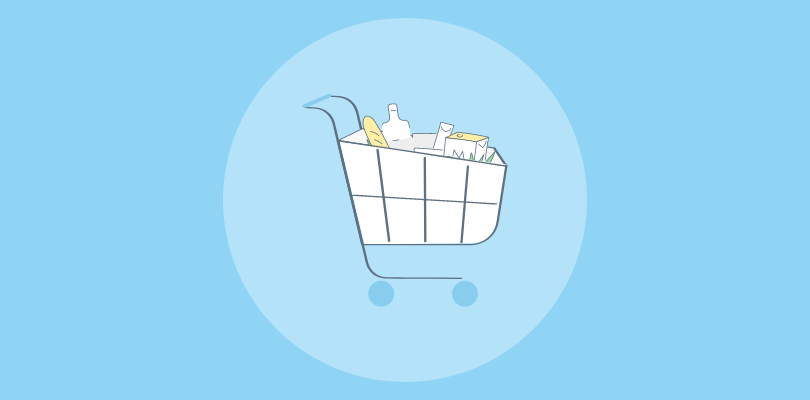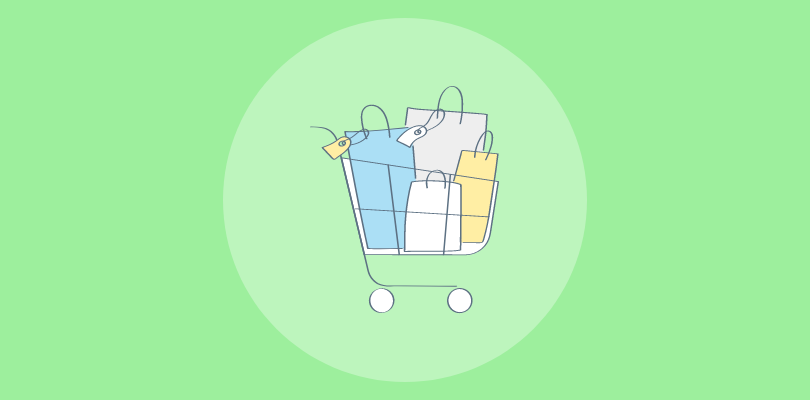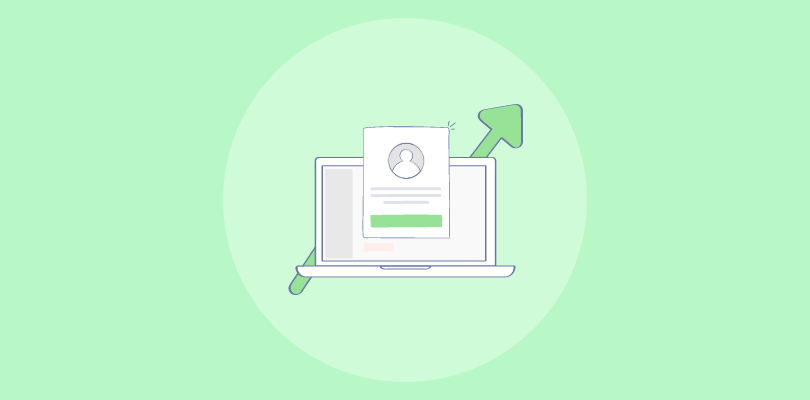The future of eCommerce is personalized customer service. Brands that key into this concept potentially drive conversions through the roof. As shoppers are fiercely knowledgeable and demanding the best experience possible. Brands that deliver get the bacon.
Ever wondered what it would be like to have every email you receive, mobile offer you view, the advertisement you see, the website you browse, as well as retail store you visit personalized just for you?
Think it’s impossible? Salesforce Marketing Cloud Vice President of Predictive and Web Products, Eric Tobias says forward-thinking organizations are already personalizing customer touchpoints across physical and electronic channels.
Technology advancements make gathering customer data and behavioral targeting possible. Brands can now offer a personalized customer experience. On several fronts and touchpoints, with the right strategy and implementation plan.
What is Personalized Marketing?
It is a form of marketing that delivers an individualized experience. Extremely targeted, it creates interactions that feel familiar to customers. Shoppers feel ‘at home’ with personalized marketing (also known as one-to-one marketing). They feel connected and this drives conversions.
Personalized marketing has opened a new and credible vista for marketers to get the attention of consumers who’re clearly tired of spam emails, have banner ad blindness, and are just craving for a human connection.
How Personalization Is Changing the Face of the Marketing Industry
Infosys commissioned research in December 2013 to highlight the impact of digital marketing operations on the expectations of shoppers. It concluded, after analyzing insights from 1,000 consumers and 50 retailers across the United States, that consumers now expect an all-rounded shopping experience across all channels (online and offline).
The study examined the need for a consistent and coordinated brand interaction across channels (electronic and physical), the effect of personalization on the rising expectations of shoppers, as well as efforts being made by retailers to deliver flawless shopping experiences on all touchpoints.
86% of respondents who have experienced personalization said it influences their purchase decisions to some extent while 25% said personalization radically influences what, when, where, and how they purchase.
The report also stated that 62% of retailers interviewed presently offer personalization. All of whom have enjoyed at least one of the following four benefits from this technology:
- 74% enjoyed a boost in sales
- 61% had an increase in profit
- 58% had a swell in online traffic
- 55% enjoyed a boost in customer loyalty
7 Ways to Personalize Your Marketing
1) Personalized Product Recommendations
People are more likely to connect with product recommendations based on browsing history, a past purchases, webinars attended, etc.
If I visit your website, looking for flat shoes and you recommend some popular brands to me, I’ll most likely check them out.
In 2016, Accenture released a report that claimed 75% of shoppers prefer to buy from a retailer that recognizes them personally by name, recommends products based on purchase history, etc. Such patrons are willing to shop more and buy often if a retailer succeeds in nailing their unique needs with recommendations and recognizes them accordingly. Here is a graphical representation:
2) Personalized Email Campaigns
To successfully engage with personalized email campaigns, you’ve got to:
Create a customer persona
Who on earth are you targeting with your business? Having a clear idea of a potential customer helps to send effective personal emails; you’re able to hit bull’s eye. Here’s an example from Mailchimp:
Tony Zambito is a veteran in the field of buyer personas. He defines the term as “research-based archetypal (modeled) representations of who buyers are, what they are trying to accomplish, what goals drive their behavior, how they think, how they buy, and why they make buying decisions. (Today, I now include where they buy as well as when buyers decide to buy.)”
Segment email list
Doing this from the get-go helps to prevent a mass emailing approach. You’re able to serve your subscribers at the very point of their need. Segments based on specific needs and interests enable you to address subscriber/customer pain points.
Case Study: Email Segmentation Boosts Revenue at Intermix
Intermix sells designer female clothes and accessories. It wanted to lift email marketing revenue a few years back and employed the use of segmentation.
It grouped customers into three segments based on purchase history, average worth of purchases, as well as open rates and click-throughs.
- Group 1: VIPs – shoppers who loved to have the latest in fashion and could afford them
- Group 2: Discount shoppers – patrons who pinch pennies; they’re often on the lookout for coupons, discounts, sales offers, etc.
- Group 3: Brand patrons – consumers who’re price conscious but loyal to specific brands
Intermix then sent email offers relevant to each of these three groups. The result? A 15% bump in annual income.
Send triggered or behavioral emails
These are emails sent to shoppers when they abandon their cart, subscribe to a newsletter, or purchase a product. Sent to acknowledge consumers and engage them, for deeper conversations, triggered emails are answers to consumer behavior.
Here’s Amazon with an email influenced by a search I recently conducted for a book by Gary Vee. It’s triggered or behavioral in nature:
When weighed against generic emails, triggered emails enjoy a 152% higher open rate. Now, that’s huge and a pointer to the fact that behavioral emails can effectively be used to convert prospects into buyers.
Personalized emails can also target recipient’s location like this email by Yelp, a location-based business:
3) Personalized Content Marketing
Such could include white papers, blog posts, podcasts, videos, webinars, etc. Content marketing works. These statistics are proof.
Jessica Sprinkel is Director of Marketing Programs at Logi Analytics, an analytics software startup in Washington, DC. She provides an insight into how companies are personalizing their marketing with current technological advancements.
“More recently”, she says, “marketers have been able to use dynamic content, which means instead of setting up individual campaigns, and trying to route prospects into the optimal one, you can create ONE campaign, ONE email, and ONE landing page – all of which display differently depending on who is on the receiving end.”
Ann Gynn, the editor of the CMI blog, shares some tips to get personalization right in content marketing. According to her (and some content professionals featured in the piece), content marketers should:
- Systematically gather data on individuals. It requires quite an effort but is entirely possible with content and technology
- Track their audience’s content preferences and personalize further communication based on this information
- Balance their personalization efforts with caution to avoid going overboard
- Ensure their content meets the information needs of customers. These include answering questions they may have about your product and how to use it, reviews and opinions of actual product users, etc.
- Start small and scale their efforts. It could be a survey, event, or any reason they provide themselves for reaching out
- Curate existing information into a digest that addresses the needs of customers
- Gain a deep understanding of their customers. Be human. Listen more. Provide information that helps with consumer goals
Ensure users enjoy their browsing experience by having a responsive design. You definitely want your mobile visitors to enjoy the experience. A website targeted towards desktop visitors cannot deliver that. Using responsive landing page templates across the board, with mobile-friendly features like swipe and click-to-call, can ensure a pleasurable browsing experience across channels.
4) Personalized Advertising and Promotions
Known as retargeting ads, they are online adverts based on a consumer’s online behavior.
Unlike typical banner ads, Hubspot says “retargeting ads are a form of online targeting advertising and are served to people who have already visited your website or are a contact in your database (like a lead or customer).”
Have you ever visited a website only to see adverts of that website showing up on other websites you visit? That is retargeting at work. The objective is to bring previous website visitors back. You might want to check these statistics to know just how effective they can be.
Want to get optimal performance from retargeting campaigns?
Here are some best practices to consider:
- Be intentional about how and when you serve ads. You don’t want to annoy prospects by having your ads follow them everywhere they browse
- Ensure to enroll users who’ve purchased an offer into a new ad campaign. You don’t want them to see an offer they’ve already invested in. It’s annoying. A snippet of code placed on your post-transaction page untags such users
- Ensure to serve ads that match the level of engagement displayed by users. Segmenting your audience enables you to serve appropriate and engaging ads
- Avoid using multiple providers as it drives up costs. You may also have issues implementing frequency caps. You may also have a situation where all the providers are bidding on the same spots on the same websites. It’s kind of clumsy. Try using an opt-in popup that can help collect consent from users for more personalized retargeting, enhancing their experience and ensuring compliance with regulations.
- Ensure to get the best bang for your buck by targeting the right ads at the right audience at the right time. This saves you money. Targeting your ads along demographic, geographic, and contextual lines ensures only interested people see them
5) Personalized In-Store Experiences
Personalized retail is the future of physical stores. There’s no denying that fact. Whether it’s about greeting the customer, making recommendations, knowing a customer’s purchase history, etc, customers are everyday people and they love to have personalized experiences. We currently operate in an ‘experience economy’ and retailers that get this would hit conversion goals (all things being equal).
Beaconstac lists three best practices for personalizing in-store experiences. They include:
- Collect information on customer behavior (don’t allow in-store visits and interactions to go without being captured). Integrate this data with CRM, POS, and other customer loyalty programs to enable you to understand your patrons, their motivations, desires, purchasing power, etc.
- Analyze information to understand shopping patterns (so you can spot patterns that boost sales). For instance, you may discover that more and more people are buying a particular product at a particular time and at a certain price tag by a certain demographic. Your next assignment is to look for how to sell more of that product (by pairing it with other products)
- Use beacon-enabled interactions to send a welcome message at the entrance of the store. Such a message addresses the customer by name and lists all the store has on offer. This ensures your patrons don’t miss out on offers they might have been interested in
You can implement these tips and measure results over time. You can then adjust as you scale in-store personalization efforts.
6) Personalized Mobile Marketing
These include SMS, MMS, In-App Ads, QR Codes, etc. Brands can personalize these interactions to reach their target audience. Phones are intimate objects and people guard their privacy jealously. As a result, brands have to tread with caution. To avoid annoying consumers, 1to1media suggests the following:
- Track user permission (they may not grant your express permission but you can measure interest by their actions)
- Take time to build a relationship (like every other relationship, it takes time and value-addition)
- Watch frequency of notifications (send too many alerts and you lose the attention of subscribers)
In a piece published in 2014, Neil Parker, a product marketer of many years standing, listed the three biggest challenges of mobile marketing. He listed them as:
- Context (messages sent to phones should match the consumer’s circumstances, needs, attitude, lifestyle, etc. Out-of-context messages just won’t work)
- Connection (data mining efforts need to be linked with insights from the social media profiles of consumers to understand their buying journey and process. Insights garnered from conversations with customers can also help brands with this)
- Control (give consumers a right to their privacy; give them as much control as possible. Even in cases where they opt-in to receive messages. Otherwise, you’ll lose their attention)
Mobile marketing works, regardless. Here are some statistics to prove this.
7) Personalized Social Media Campaigns
Social networks are huge databases of consumer information. You can leverage on this to personalize your social marketing campaigns.
Data Mentors suggests four ways to do this:
- Identify your target audiences and contact them with direct social media messages
- Know which social media platform to use for individual campaigns. We all know the best platform to reach out to women with visual information is Pinterest. Study the social networks available and how best to use them to achieve your purposes
- Make your marketing effective by combining social media marketing with email and direct marketing
- Measure the performance of your social media marketing efforts by tracking shares, likes, comments, etc.
Want to see live examples of some great social media campaigns? Check this out!
Wrapping It All Up
Personalization is truly changing the face of marketing. Wise brands know it’s better to get personal than fight this wave that is currently ruling the marketing industry. Interestingly, consumers are willing to provide information to enjoy personalized services (source). This is good news for brands as they get optimal co-operation from shoppers.
Like everything in life, personalization has challenges (which technological improvements are trying to address). But, it holds great opportunities for the retail industry.
FREE. All Features. FOREVER!
Try our Forever FREE account with all premium features!

 We'd love your feedback!
We'd love your feedback! Thanks for your feedback!
Thanks for your feedback!







